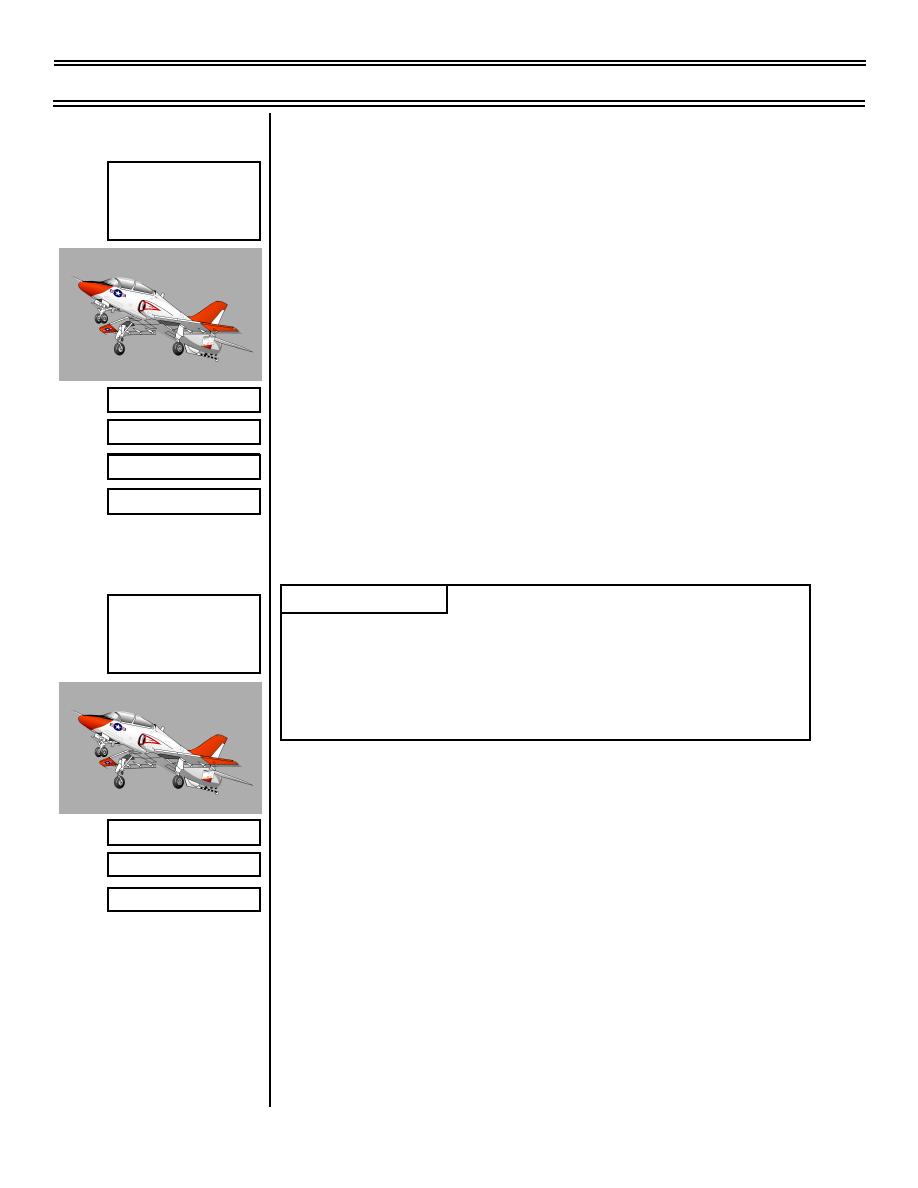
T-45C TS, ADV & IUT EMFP-01
Start, Ground, and Takeoff Emergency Procedures
5.
Blown tire during takeoff 1.5.3.1.5.3.1.1,
Sg 3, fr 9
1.5.3.1.5.3.2
Blown Tire Damage
Areas, Nose Gear
(4 Overlays)
a.
Indications
(1) Aircraft may suddenly veer left or right
NOTE: If a main gear tire blows, the
aircraft will veer toward the blown tire.
(2) Loud or muffled noise caused by initial tire
Overlay 1
destruction
Overlay 2
(3) Continuous rumble or vibration caused by
Overlay 3
flat tire
Overlay 4
b.
Procedures - See NATOPS
LESSON NOTES
Sg 3, fr 13
Blown Tire Damage
Areas, Main Gear
These graphics show areas which could be damaged by a
(3 Overlays)
blown tire. Explain how this damage will affect the aircraft and
flight safety.
A blown nose wheel tire may cause engine
FOD. A blown main gear tire may damage the
Overlay 1
flaps, and/or brake lines. Any blown tire may
damage the gear doors or wheelwell
Overlay 2
equipment. If the decision to stop is made, the
Overlay 3
primary danger is loss of directional control. Do
not attempt to taxi
CAUTION: Retraction of gear or flaps may
cause additional damage to flaps, gear
doors, or wheel well area.
NOTE: Do not taxi with a flat or damaged tire.
Page 1-24
Original (9-98)




 Previous Page
Previous Page
